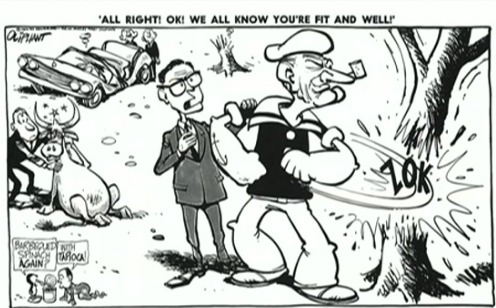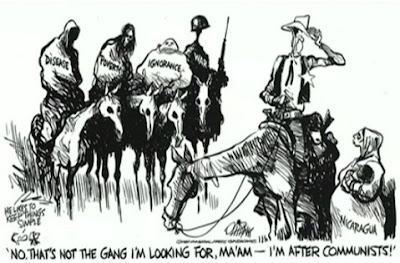 |
| 1941-2022 |
The Royal Academy of Arts-trained actor David Warner didn't always play villains. Early in his career and onstage he played Hamlet, such a goody-two-shoes that it took him forever to avenge his father's death because he thought it might give him guilt pangs afterwards. In the 1976 feature film The Omen he must have been a nice enough character or why else would that little Antichrist boy have him knocked off? In Airport '79: The Concorde he's in the cockpit yukkin' it up with George Kennedy while the real villain of the piece, Robert Wagner (!) tries to shoot the supersonic aircraft out of the sky with a surface-to-air missile. In a 1984 TV version of A Christmas Carol, starring Geroge C. Scott as Scrooge, Warner plays Bob Cratchit. Now, there's nothing villainous about wanting a day off for the holiday, is there? And in the final Star Trek movie with the original TV cast, 1991's The Undiscovered Country, Warner is a good-hearted Klingon who wants peace between his Empire and the Federation. Why, if not for Warner's character, Worf might not have served alongside Picard and Data in The Next Generation!
Nevertheless, Warner's gaunt physicality and, to American ears, sometimes sinister-sounding British accent meant that he got cast more often than not as bad guys, beginning with 1963's Tom Jones as the snobby young Blifil, who conspires against the randy 18th century title character (not to be confused with the randy 20th-21st century Welsh singer.) He was Jack the Ripper transported to 1979 San Francisco in Time After Time, the digital villain Sark in Tron (1982), and a villainous valet in Titanic (1997). And Warner played the ultimate villain, Evil, in 1982's Time Bandits:
Evil doesn't understand computers? Neither do I much of the time, but gee, I like to think I'm a nice person anyway.
 |
| 1939-2022 |
Paul Sorvino was the consummate supporting role actor, usually in dramas, but was pretty good in the occasional comedy, such as when he played the bombastic televangelist in 1977's Oh, God. There was also, a few years earlier, a rather odd made-for-TV comedy movie named It Couldn't Happen to a Nicer Guy, about a middle-aged man who gets raped by a beautiful young woman, and can't get anyone to believe him. Hard to believe that last sentence, huh? I saw this when I was in the sixth grade, accepted it on its own terms, and found Sorvino as the beleaguered-in-more-ways-than-one victim funny enough in it. Were I to watch that movie again, I would like to think my reaction--no matter how funny I found Sorvino--would be What in the hell were they thinking?! Let's get back to drama, and, just this once, on safer ground. Sorvino's big break was as an ex-high school jock among several in the 1972 Broadway hit, That Championship Season, written by Jason Miller (also an actor, Miller played the young priest in The Exorcist.) In both movies and television Sorvino played cops quite a bit, including Sergeant Phil Cerreta for a single season of Law and Order. Yet from 1990 right to the day he died, Sorvino may have been best-known for not playing a cop but a man who is the target of cops (when he's not paying them off) Mafia chieftain Paul Cicero in Martin Scorsese's Goodfellas:
Don't do drugs. The mob boss as Nancy Reagan.
 |
| 1945-2022 |
Kind of harsh assessment there. I think Wally may just be miffed about not being included in the show's title.



























.jpeg)









